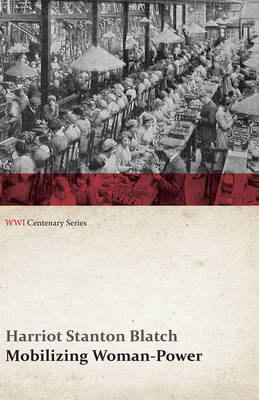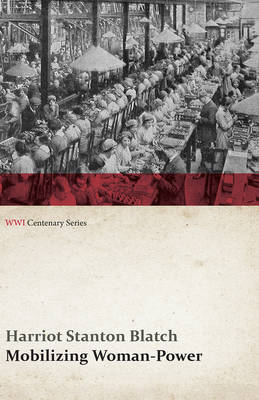
- Afhalen na 1 uur in een winkel met voorraad
- Gratis thuislevering in België vanaf € 30
- Ruim aanbod met 7 miljoen producten
- Afhalen na 1 uur in een winkel met voorraad
- Gratis thuislevering in België vanaf € 30
- Ruim aanbod met 7 miljoen producten
Zoeken
Omschrijving
This early work by Harriot Stanton Blatch was originally published in 1918 and we are now republishing it as part of our WWI Centenary Series. 'Mobilizing Woman-Power' is an excellent work that details the author's views on the role of women during the First World War. In the foreword Theodore Roosevelt writes: 'Mrs. Blatch shows why every woman who inherits the womanly virtues of the past, and who has grasped the ideal of the added womanly virtues of the present and the future, should support this war with all her strength and soul. She testifies from personal knowledge to the hideous brutalities shown toward women and children by the Germany of to-day; and she adds the fine sentence: "Women fight for a place in the sun for those who hold right above might."' This book is part of the World War One Centenary series; creating, collating and reprinting new and old works of poetry, fiction, autobiography and analysis. The series forms a commemorative tribute to mark the passing of one of the world's bloodiest wars, offering new perspectives on this tragic yet fascinating period of human history. Each publication also includes brand new introductory essays and a timeline to help the reader place the work in its historical context.
Specificaties
Betrokkenen
- Auteur(s):
- Uitgeverij:
Inhoud
- Aantal bladzijden:
- 214
- Taal:
- Engels
- Reeks:
Eigenschappen
- Productcode (EAN):
- 9781473313163
- Verschijningsdatum:
- 21/05/2014
- Uitvoering:
- Paperback
- Formaat:
- Trade paperback (VS)
- Afmetingen:
- 140 mm x 216 mm
- Gewicht:
- 276 g

Alleen bij Standaard Boekhandel
+ 56 punten op je klantenkaart van Standaard Boekhandel
Beoordelingen
We publiceren alleen reviews die voldoen aan de voorwaarden voor reviews. Bekijk onze voorwaarden voor reviews.











